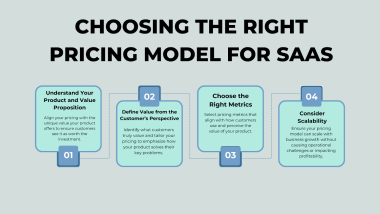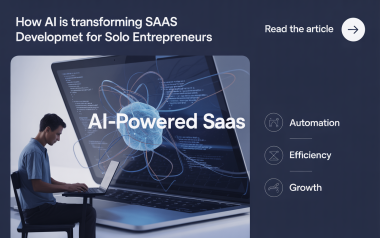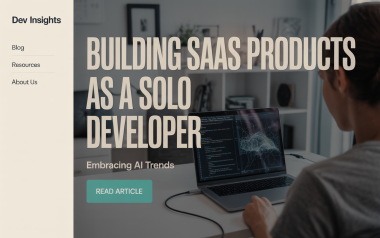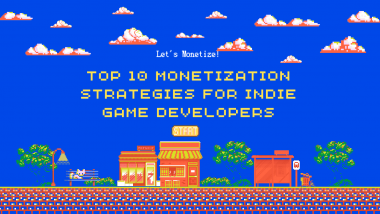Developing scalable SaaS products as a solo entrepreneur requires strategic planning and smart resource allocation to overcome the inherent limitations of working alone. By leveraging modular architecture, AI-powered automation, and targeted marketing approaches, individual developers can build competitive products that grow efficiently while avoiding the typical scalability bottlenecks that plague small teams.
Key Takeaways:
- Start with a clearly defined MVP focusing on core features only to validate your product quickly
- Implement modular architecture from the beginning to enable easier scaling and feature additions
- Leverage AI tools to automate routine tasks and enhance productivity without expanding your team
- Target niche markets with specific unmet needs rather than competing in oversaturated spaces
- Create continuous feedback loops with early users to guide product development and improvements
Strategic Development Approaches for Solo SaaS Builders
Starting a SaaS product alone requires calculated development decisions from day one. I’ve found that beginning with a crystal-clear application concept and MVP is crucial before writing a single line of code.
The MVP should address the most pressing pain points of your target audience while avoiding feature bloat. This approach validates your idea with minimal resource expenditure and provides essential user feedback for future iterations.
When selecting your tech stack, consider both your personal expertise and long-term scalability needs. Popular combinations include:
- React or Vue.js for frontend development
- Node.js, Django, or Ruby on Rails for backend services
- AWS, Google Cloud, or Azure for hosting and infrastructure
The architecture of your application can make or break your scaling efforts. Modular or microservices designs allow independent scaling of different components as user demand grows. This approach enables you to update or replace individual parts without disrupting the entire system.
Leveraging AI Tools for Solo Developer Efficiency
AI tools have revolutionized what solo developers can accomplish, effectively multiplying your productivity. Low-code AI platforms provide accessible entry points for integrating intelligent features without requiring deep expertise in machine learning.
Consider implementing AI for these high-impact areas:
- Customer support automation (chatbots, email response suggestions)
- Data analysis and user behavior insights
- Content generation and personalization
- Code completion and bug detection
AI integration creates a compelling narrative for potential investors. It demonstrates how you’ve built systems that can scale without proportional increases in human resources, addressing a common concern about solo-founded startups.
Effective Customer Acquisition Strategies
Acquiring customers efficiently requires targeted approaches rather than broad marketing campaigns. Begin with detailed market research to understand where potential users spend their time online and what messaging resonates with them.
Digital marketing channels provide cost-effective ways to reach your audience. Focus on:
- Content marketing that demonstrates your expertise and product benefits
- SEO optimization to capture relevant search traffic
- Targeted social media engagement in communities where your users gather
- Strategic partnerships with complementary tools or services
Implementing a systematic feedback collection process helps refine both your product and marketing approach. User interviews, in-app surveys, and usage analytics provide valuable insights about which features to prioritize and how to position your product effectively.
Fundraising Tactics for Solo Founders
Securing investment as a solo founder presents unique challenges but isn’t impossible with the right approach. Demonstrating traction becomes even more critical when you don’t have the perceived advantage of a diverse founding team.
Investors look for evidence that your solution can scale beyond a single person’s capabilities. Highlighting your modular architecture and AI integration shows foresight about growth potential without requiring linear team expansion.
When pitching to investors, emphasize these elements:
- Validated market need with user testimonials and usage data
- Automated systems that handle routine operations
- Clear roadmap for scaling with minimal additional headcount
- Unique insights or technical advantages that larger competitors lack
Bootstrap as long as possible to build leverage before seeking external funding. This approach lets you retain more equity and demonstrate resourcefulness—a quality investors value in solo founders.
Indie Hacking Growth Strategies
The indie hacker approach emphasizes sustainable growth over rapid expansion at all costs. I recommend identifying underserved niche markets where large competitors aren’t focused, allowing you to establish a foothold with less resistance.
Community engagement provides both marketing opportunities and valuable feedback. Active participation in platforms like Indie Hackers, Product Hunt, and relevant subreddits connects you with potential users and fellow entrepreneurs facing similar challenges.
Optimize your limited resources by focusing on these high-impact activities:
- Building in public to generate interest and accountability
- Creating templates and processes to streamline repetitive tasks
- Leveraging no-code or low-code tools for non-core functionality
- Setting up automated monitoring and maintenance systems
The solo developer path requires strategic time allocation between development, marketing, and customer support. Many successful indie hackers schedule dedicated time blocks for each area rather than constantly context-switching throughout the day.
By combining these approaches—strategic development, AI leverage, targeted acquisition, smart fundraising, and indie hacking principles—solo developers can build scalable SaaS products that compete effectively in today’s market. The limitations of being a one-person operation become less relevant when you maximize technological advantages and focus on the right niche.
Sources:
blog.hoffnmazor.com – Can a Solo Developer Build a SaaS App?,
fungies.io – How Solo Developers Can Leverage AI to Build Scalable SaaS Products,
vivasoftltd.com – Can a Solo Developer Build a SaaS App?,
acropolium.com – Scale SaaS,
eleken.co – Micro SaaS Guide






